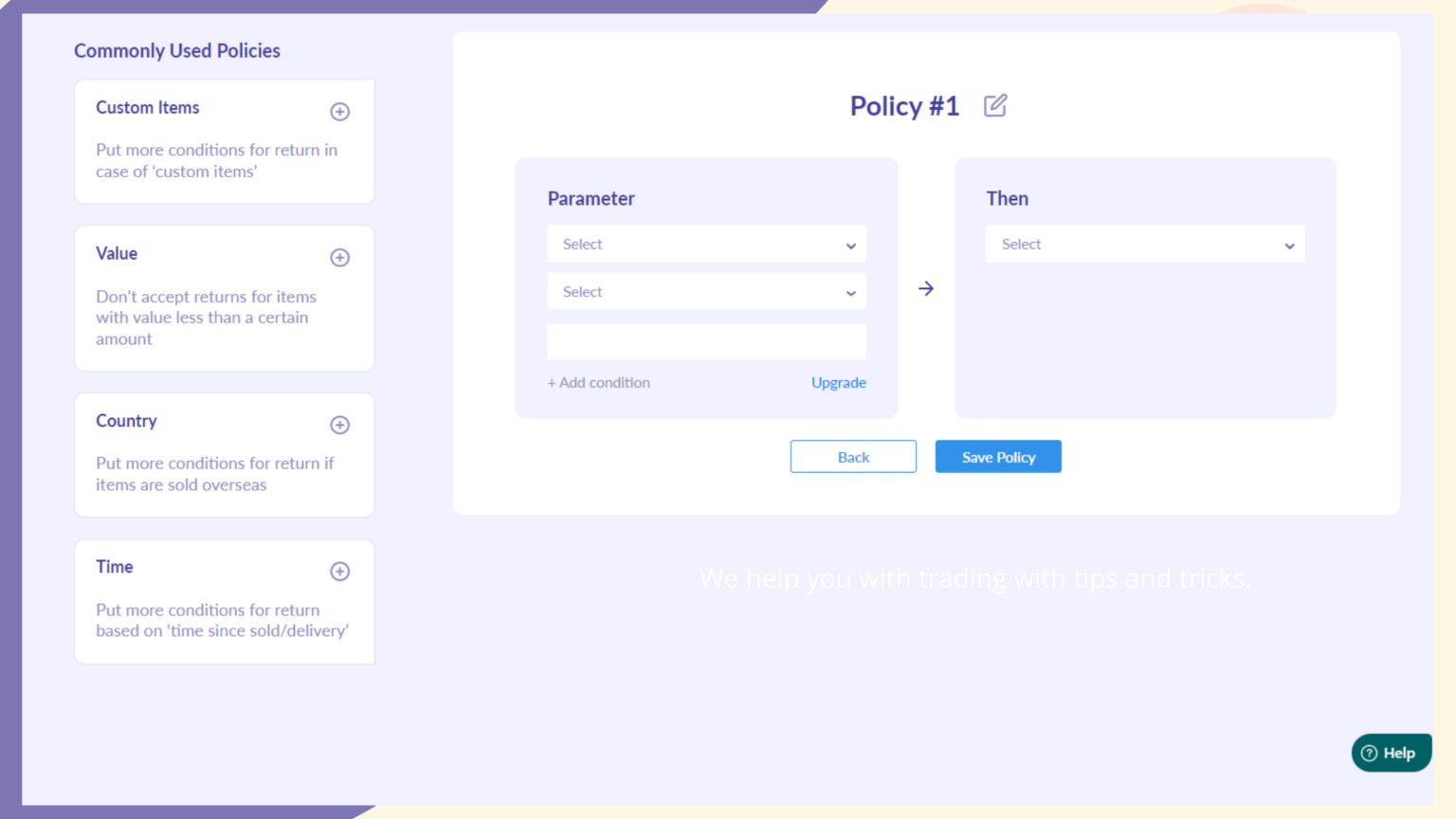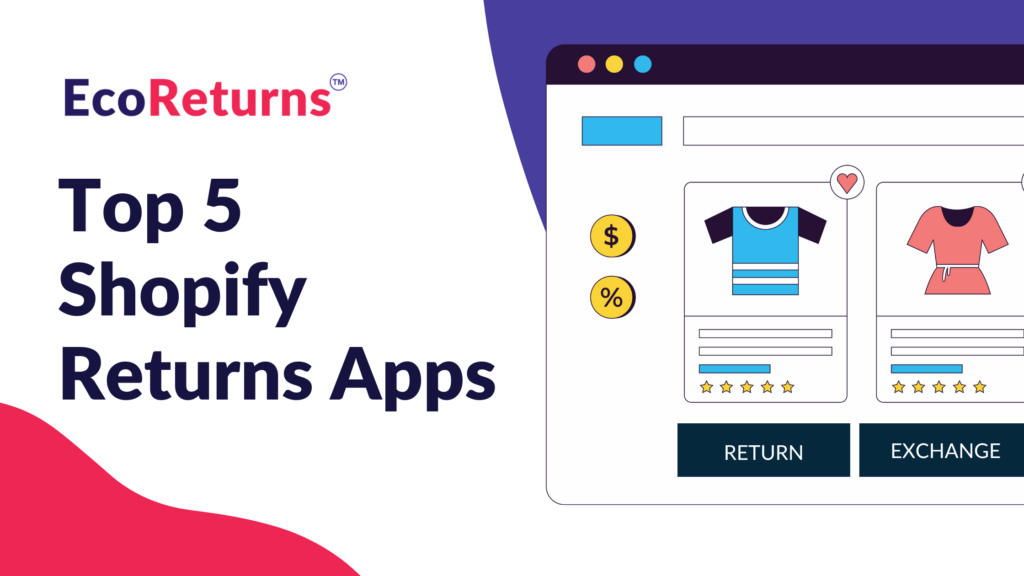Every online seller needs a return policy template.
Returns are an inherent burden for online brands as customers can’t see and feel products in your online store prior to purchasing them. Even the most informed consumers can change their mind about a purchase, and items may arrive damaged. These are only a few examples of reasons for returns and the profiles of customers who return products. Your return policy should be clear, easy to find, and address the types of returns allowed and the parameters for accepting each type of return request. Returns are a type of customer feedback that is valuable to your business and can spur repeat orders.
Why Every Online Store Needs a Return Policy
1) It may be legally required in your region
2) Having a clear return policy can determine whether shoppers will buy from you
3) Offering returns and exchanges can improve customer experience and loyalty
4) Having an easy-to-find, easy-to-understand return policy can help reduce your return rate
Know The Return Policy Laws in Your Region
The most important characteristic of a return policy is that it has legal implications. In The UK, for example, online retailers are required to offer a 14 day return policy. In the US, return laws can vary by state, similar to gift card law and payment processing regulations online retailers must follow. That said, try not to make your return policy sound like a legal contract. Instead, consider what you’d want to read as a shopper, and write your return policy in the same voice and tone you’d want your customer service reps to use.
Writing a Return Policy for an Online Store
When crafting a return policy, it’s best to start with an outline. If you’re using Shopify, you can generate a returns policy template automatically from the settings interface. However, it’s important to read through the return policy template and ensure the terms apply to your business. Keep in mind that your return policy is an extension of your brand and part of your online reputation. Use your return policy as a trust building factor to ensure customers they will have a positive experience. Policy language should be clear and easy to understand, and the policy should be easy to find. A typical location for a link to your return policy and returns portal is in the footer of your website.
Here are the key points we recommend covering in your eCommerce return policy to best prevent returns and reduce the impact they have on your business:
Types of Returns Accepted
You can read an in depth description of the types of returns, but put simply, you need to decide how to handle requests for returns, refunds, exchanges, damaged items, and undelivered goods. With EcoReturns, store owners can choose default return reasons allowed for their store such as fit issues and damage, and stores can develop custom return reasons and rules for handling requests automatically. Shopify store owners have the benefit of using the free EcoReturns app to automate requests and offer returns and exchanges. If your store doesn’t have a returns portal or returns automation software like EcoReturns, you may want to limit the amount of return reasons allowed simply to reduce the customer service burden of analyzing every request manually. Exchanges are an opportunity to offset the bottomline impact of returns and also a chance for upselling.

Return Window
Once the allowable reasons for return are defined, customers need to understand the deadlines for requesting a return, exchange, or refund. To reiterate the importance of having a clear return policy, consider the customer experience angle: Being able to exchange an unwanted product leads to a much better customer experience than telling a customer they’re too late to change their mind. Return and exchange requests tend to share the same time window, while deliverability, damages and defects tend to have a shorter reporting period.
Condition of Returned Goods
The main reason retailers accept returns is the potential to resale items – even though about half of the time returned goods aren’t in proper condition for resale. Let customers know the requirements for returned goods such as having original tags in tact and packaging requirements.
Handling Damages and Defects
If your online store accepts refund requests for damages and defects, consider how to assess damage and process the refund. Can you confirm damage with a customer photo, and are there cases where it doesn’t make sense to have the product shipped back? The cost of reverse logistics can further impact the bottom line when dealing with defected products. However, if you need the damaged item for quality inspection, or to bring to the carrier for refund, plan reverse shipping costs into your workflow and returns budgeting.
EcoReturns prompts customers to upload photos during the return request portal, saving store owners and customer service agents the back and forth to acquire and assess returns in the case of damage, and gets the customer their refund faster.
Return Fees and Timeline
List any fees associated with returns in your return policy. If customers are charged for return shipping or restocking fees, make that clear. Let customers know if returns can only be accepted for store credit. Finally, customers will want to know when they get their money in the case of a refund or new item in the case of exchange, so be sure to include how long the return and refund process takes.
Return Logistics
In addition to noting who pays for return shipping, you’ll need to determine how the return should be packaged, how the return label will be generated and printed, and where to ship the returned item. Stores with brick and mortar locations should determine how in store returns are different from mail-in returns.
Special Circumstances
If your store has unique situations that would impact returns processing, mention them. If you plan to have a modified policy for gifts and holiday shopping, let customers know so they can shop informed.

Configure Return Policy with EcoReturns
#Choose EcoReturns
Request a Demo


